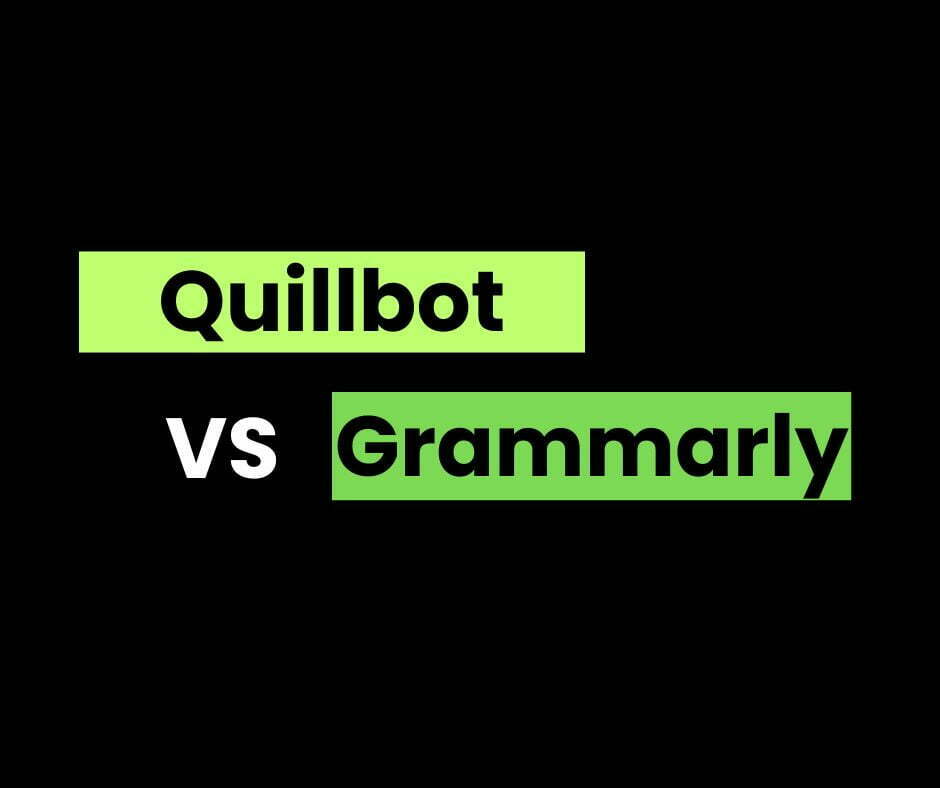Table of Contents
ToggleQuillbot vs. Grammarly: A Comprehensive Comparison

In the realm of writing assistance tools, Quillbot and Grammarly have established themselves as prominent contenders. As writers strive for impeccable grammar and enhanced clarity in their content, these tools come to the rescue. In this article, we will delve into the meanings of Quillbot and Grammarly, highlighting their key features and differences through illustrative examples.
Understanding Quillbot and Grammarly:
What is Quillbot: Quillbot is an AI-powered writing enhancement tool designed to help users rephrase and improve their sentences while maintaining the original meaning. It employs advanced algorithms to reword sentences and paragraphs, making them more polished and coherent. Quillbot is particularly useful for those seeking synonyms, sentence restructuring, and better language fluency.
What is Grammarly: Grammarly, on the other hand, is a comprehensive writing assistant that goes beyond mere sentence rephrasing. It offers grammar and spelling checks, style suggestions, punctuation correction, and even plagiarism detection. Grammarly is widely used to enhance the overall quality and correctness of writing.
Differences between Quillbot and Grammarly:
Functionality: Quillbot primarily focuses on paraphrasing and rewording content to improve its flow and structure. Grammarly, meanwhile, covers a wider range of writing aspects, including grammar, spelling, punctuation, style, and clarity.
Example: Original Sentence: “The conference was attended by a large number of participants.”
Quillbot Result: “A considerable number of participants attended the conference.” Grammarly Suggestion: “The conference was well-attended by a large number of participants.”
Synonym Suggestions: Quillbot specializes in providing synonym suggestions to replace words with their alternatives, thereby enhancing vocabulary variety. Grammarly also suggests synonyms, but its focus extends to contextual correctness and style improvements.
Example: Original Sentence: “The book was very informative.”
Quillbot Suggestion: “The book was exceedingly informative.” Grammarly Suggestion: “The book was highly informative.”
Grammar and Style Checks: Grammarly excels in identifying and correcting grammatical errors, such as subject-verb agreement, tense consistency, and sentence fragments. While Quillbot can indirectly address some grammar issues through sentence restructuring, it doesn’t offer comprehensive grammar checks like Grammarly.
Example: Original Sentence: “He don’t like the idea.”
Quillbot Result: “He doesn’t like the idea.” Grammarly Suggestion: “He doesn’t like the idea.”
Plagiarism Detection: Grammarly includes a plagiarism detection feature that highlights potential instances of copied content and provides originality suggestions. Quillbot does not have a built-in plagiarism checker.
Example: Original Sentence: “The concept of artificial intelligence dates back to the 1950s.”
Grammarly Originality Feedback: “Original” (Quillbot does not provide plagiarism detection)
Conclusion:
Both Quillbot and Grammarly offer valuable writing assistance, but they cater to different needs. Quillbot is a rephrasing tool that focuses on sentence enhancement and vocabulary enrichment. Grammarly, on the other hand, offers a more comprehensive suite of writing features, including grammar correction, style improvement, and plagiarism detection. Choosing between these tools depends on your specific requirements and the depth of assistance you seek in your writing journey.

